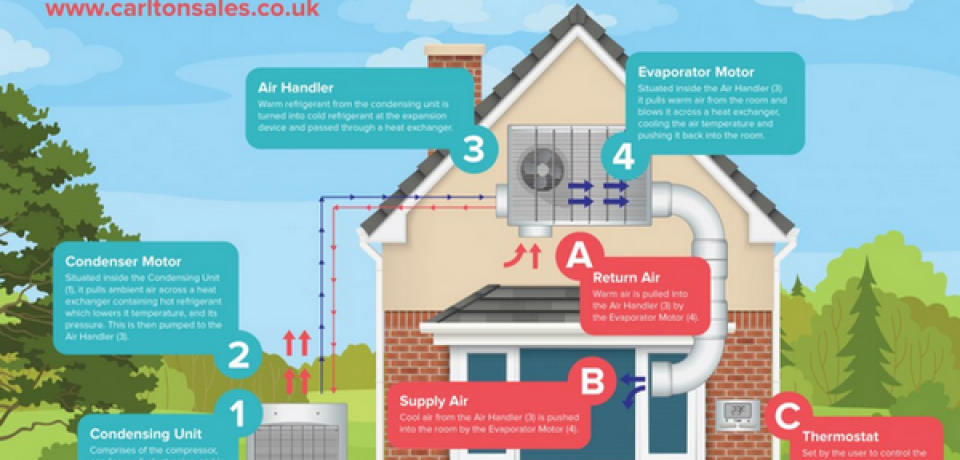The Ultimate Guide To Understanding Warm Pumps - Just How Do They Function?
The Ultimate Guide To Understanding Warm Pumps - Just How Do They Function?
Blog Article
hvac christchurch Written By-Forrest Cates
The most effective heat pumps can save you considerable amounts of cash on energy expenses. They can likewise help in reducing greenhouse gas discharges, especially if you make use of electrical energy instead of fossil fuels like gas and heating oil or electric-resistance furnaces.
Heatpump work significantly the like a/c unit do. This makes them a viable choice to conventional electrical home heater.
Just how They Function
Heat pumps cool down homes in the summer and, with a little aid from electrical energy or natural gas, they provide some of your home's heating in the wintertime. They're an excellent option for people who wish to lower their use of nonrenewable fuel sources however aren't prepared to replace their existing heating system and a/c system.
They depend on the physical reality that even in air that appears also chilly, there's still energy present: cozy air is constantly moving, and it intends to relocate right into cooler, lower-pressure settings like your home.
Many power celebrity accredited heat pumps operate at near their heating or cooling ability throughout the majority of the year, lessening on/off biking and conserving power. For the best performance, concentrate on systems with a high SEER and HSPF ranking.
The Compressor
The heart of the heatpump is the compressor, which is also called an air compressor. This mechanical streaming device utilizes potential energy from power production to increase the pressure of a gas by minimizing its quantity. heat recovery ventilation nz cost is various from a pump in that it only deals with gases and can not collaborate with liquids, as pumps do.
mitsubishi electric heaters goes into the compressor with an inlet valve. It travels around vane-mounted arms with self-adjusting length that separate the inside of the compressor, creating numerous tooth cavities of varying size. The rotor's spin pressures these dental caries to move in and out of stage with each other, pressing the air.
The compressor draws in the low-temperature, high-pressure refrigerant vapor from the evaporator and presses it into the warm, pressurized state of a gas. This procedure is repeated as needed to supply home heating or cooling as needed. The compressor also consists of a desuperheater coil that reuses the waste heat and includes superheat to the cooling agent, transforming it from its liquid to vapor state.
heat pump special in heatpump does the very same point as it does in fridges and ac system, altering liquid cooling agent right into a gaseous vapor that gets rid of warm from the space. Heat pump systems would not function without this critical piece of equipment.
This part of the system lies inside your home or structure in an indoor air handler, which can be either a ducted or ductless device. It includes an evaporator coil and the compressor that compresses the low-pressure vapor from the evaporator to high pressure gas.
Heatpump take in ambient heat from the air, and afterwards make use of electrical power to move that warm to a home or organization in heating mode. That makes them a whole lot a lot more power effective than electrical heating systems or heaters, and since they're making use of clean power from the grid (and not melting fuel), they additionally generate far fewer emissions. That's why heatpump are such fantastic environmental choices. (In addition to a significant reason why they're becoming so preferred.).
The Thermostat.
Heatpump are terrific options for homes in cold climates, and you can use them in combination with typical duct-based systems and even go ductless. They're a great alternate to fossil fuel heating systems or typical electrical heating systems, and they're a lot more lasting than oil, gas or nuclear cooling and heating devices.
Your thermostat is one of the most important component of your heatpump system, and it works extremely in different ways than a conventional thermostat. All mechanical thermostats (all non-electronic ones) work by using materials that change size with increasing temperature, like curled bimetallic strips or the increasing wax in a car radiator valve.
These strips include 2 different sorts of metal, and they're bolted together to create a bridge that completes an electrical circuit attached to your a/c system. As the strip gets warmer, one side of the bridge expands faster than the other, which triggers it to bend and signify that the heating unit is required. When the heatpump is in heating mode, the turning around shutoff reverses the circulation of refrigerant, to ensure that the outside coil now works as an evaporator and the indoor cyndrical tube becomes a condenser.